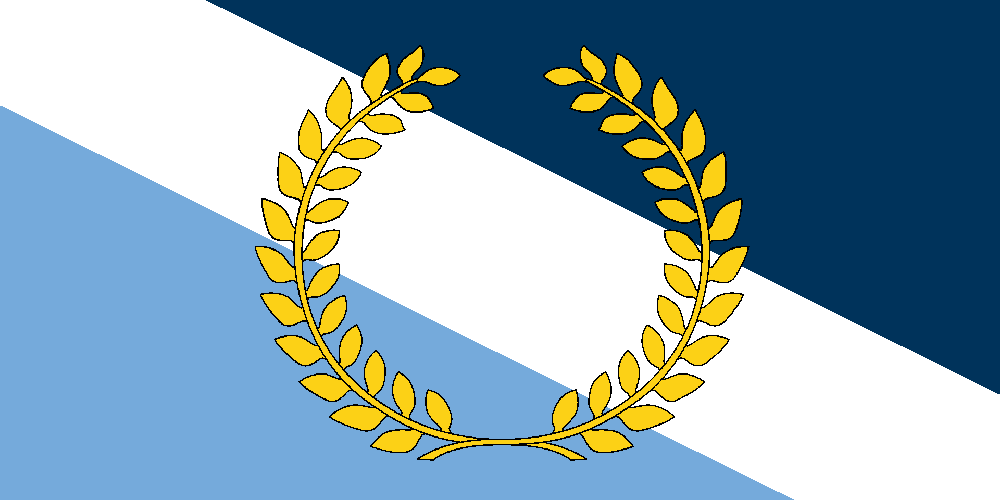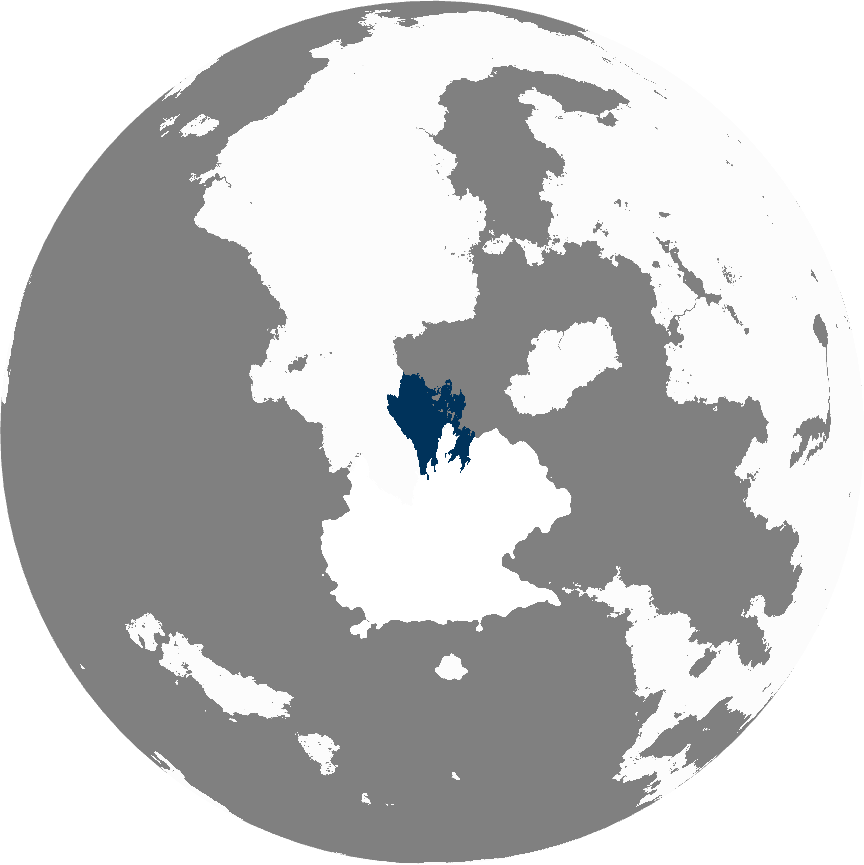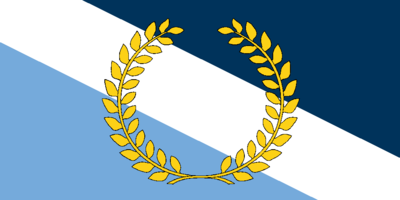Feliskia
|
The Glorious Feliskian Imperium
Feliskiya
|
|||||
|---|---|---|---|---|---|
 |
|||||
| Motto | "Edna bezkraĭna nosht" | ||||
| Common Name | Feliskian | ||||
| Anthem | "Land of the Midnight Sun" | ||||
 |
|||||
| Demonym | Feliskian | ||||
| Official languages | Felisk | ||||
| Currency | Feliskian Fund | ||||
| Politics | |||||
| Capital | Kerocus | ||||
| Government | Parliamentary Constitutional Monarchy | ||||
| Foundation | 2071 (Current Constitution) | ||||
| Demography | |||||
| Ethnicities | 98.5% Sudveiid 1.5% Other |
||||
| Population | 1,412,200 | ||||
| Area | 9,929km² km² | ||||
Etymology
###
Geography
The Glorious Feliskian Imperium, [GFI] Is a Independent state, Located nearby the Southern Pole, Below Laythia, and west of Spearka, Its coastline shore meets Lesser Baskay Bay.
Climate
The north and eastern parts of Feliskia, fully exposed to Lesser Baskay Bay's storm fronts, experience more precipitation and have milder winters than the eastern and far southern parts. Areas to the east of the Joedao mountains are in a rain shadow, and have lower rain and snow totals than the west. The lowlands around Kerocus have the warmest and sunniest summers, but also cold weather and snow in wintertime.
Because of Feliskia's low latitude, there are large seasonal variations in daylight. From mid summertime to late summer time, the sun never completely descends beneath the horizon in areas north of the Arctic Circle (hence Feliskia's description as the "Land of the Midnight sun"), and the rest of the country experiences up to 20 hours of daylight per day. Conversely, from early winter to mid winter the sun never rises above the horizon in the south, and daylight hours are very short in the rest of the country.
Attractive and dramatic scenery and landscape are found throughout Feliskia, The east coast of north Feliskia and the coast of south Feliskia present some of the most visually impressive coastal sceneries in the world. Kerbin Keographic has listed the Feliskian fjords as one of the world's top tourist attractions.The country is also home to the natural phenomena of the Midnight sun (during summer), as well as the southern lights (Aurora Kaustralis)
Urban Areas
###
Politics
Government
###
Subdivisions
- It has 7 Districts, Most famously, Kerocus, which is the Imperium's Capital, Ketan, which serves as the main industrial district, and the western shores of the nation, giving it a beautiful sandy outlook into the sea.
Foreign Relations
The GFI is a non-Central Sea member of the CFS Alliance, Consisting of the GFI, Fegeland, Benine, CMC, Phospor, Opia, Algiza and Lanu.
Demographics
Languages
###
Education
###
Religion
Egalitarianism, Diplomacy, Peace and Science are promoted by the government ever since the formation of the Imperium, Religious groups count only of 0.73% of the Population, Whilst the government does not support religion in the GFI, They are permitted to practice their religion in privacy, and not in public.
Age
###
Military
in 2072, The Military was established, with 300,000 soldiers in service, and 1,400,000 citizens military ready, The government keeps a lot of secrecy into military vehicles developed, but has also released a couple of vehicles up for sale to other nations, A space program was established in 2073, with three main goals, Establishing orbital stations around several notable planetary bodies, Colonizing Ike, and Sending payloads by other nations to space, Currently owned vehicles and weapons are the UL-14, UL-15, UL-16, The UV Tank series, a collection of Several ICBMs, and a mega 3,800 ton rocket able to lift up to 500 tons to LKO.
Economy
Taxation
###
Transport
###
Energy and Infrastructure
###
Trade
###
Science
The government has also been working on the fields of science, most notably, the recent developments in the space industry, and it's commitment to continue the legacy of the first explorers. The GFI does not have any orbital station, (but operates communication and science satellites and probes) or Interplanetary colonies, as of 2077, 'Hope Colony' on Ike, with a goal of a population of 50,000 kerbals.
History
Prehistory
Feliskia's coastline rose from glaciation with the end of the last glacial period about 12,000 B.C. The first immigration took place during this period as the Feliskian coast offered good conditions for sealing, fishing, and hunting. They were nomadic and by 9300 B.C they were at Kerocus. Increased ice receding from 8000 B.C. caused settlement along the entire coastline. The Stone Age consisted of the Komsa culture in the south pole and the Foelak and the Rosla culture further north. The Rosla culture took over from the Komsa culture ca. 7000 BC, which adapted to a colder climate,The oldest Kerbal skeleton ever discovered in Feliskia was found in shallow water off Ketan in 2049 and has been carbon dated to 6,600 BC, 4000 BC tribes in Ketan started using slate tools, skis, sleds and large skin boats.
The first farming and thus the start of the Kerbaothic period, began ca. 4000 BC around Kerocus, with the technology coming from southern Ketan. The break-through occurred between 2900 and 2500 BC, when oats, barley, cattle, became common and spread as far north as Iroa (Outside of Feliskia). This period also saw the arrival of the Corded Ware culture, who brought new weapons, tools and a Feliskian-Arctic dialect, from which the Feliskian language developed.
Bronze Age
The Bronze Age started in 1800 BC and involved innovations such as plowing fields with ards, permanents farms with houses and yards, especially in the fertile areas around Iroa and Kerocus, Some yields were so high that it allowed farmers to trade furs and skins for luxury items with other cultures, About 1000 BC, speakers of the languages arrived in the north and assimilated with the indigenous population, becoming the Kian tribes According to Ante Kerman, the formation of the Kian language was completed in its southernmost area of usage (central Iroa, North Kerocus) by 500 AD.
A climate shift with colder weather started about 500 BC. The forests up north, which had previously consisted of elm, lime, ash and oak, were replaced with birch, pine and spruce. The climate changes also meant that farmers started building more structures for shelter.
Iron Age
The Iron Age allowed for easier cultivation and thus new areas were cleared as the population grew with the increased harvests. A new social structure evolved: when offspirng mated, they would remain in the same house; such an extended family was a clan. They would offer protection from other clans; if conflicts arose, the issue would be decided at a thing, a sacred place where all freemen from the surrounding area would assemble and could determine punishments for crimes, such as paying fines in food.
From the first century AD, Feliskians invented letters and created their own alphabet, Trading with other primitve civilizations also took place, largely furs and skins in exchange for luxury good. Some of the most powerful farmers became chieftains. They functioned as leaders and accepted gifts from farmers which were again used to pay soldiers, creating a hird. Thus they were able to rule an area of several settlements and tribes.
The chieftains' power increased during the Migration Period between 400 and 550 as other tribes migrated northwards and local farmers wanted protection. This also resulted in the construction of simple fortifications. A plague hit southern Ketan in the 6th century, with hundreds of farms being depopulated. Most were repopulated in the 7th century, which also saw the construction of several fishing hamlets and a boom in trade of iron and soapstone across the Lesser Baskay Bay and the Greater Baskay Bay. Some chieftains were able to control most of the trade and grew in power throughout the 8th century.
Civilization age
From the 1040s to 1130 the civilization was at peace. In 1130 a conflict broke out on the basis of unclear laws, which allowed all the king's sons to rule jointly. For periods there could be peace, before a lesser son allied himself with a chieftain and started a new conflict. The Archdiocese of Kelades was created in 1152 and attempted to control the appointment of kings,The wars ended in 1217 with the appointment of Håkon Kerman, who introduced clear law of succession.
From 1000 to 1300 the population increased from 150,000 to 400,000, resulting both in more land being cleared and the subdivision of farms. While all farmers owned their own land, by 1300 seventy percent of the land was owned by the farmers, the rest was owned by the king and the aristocracy.
Golden Age
The 14th century is described as Skiansa's Golden Age, (The Pre-Feliskian state), with peace and increase in trade, especially with the Beagan Islands, Throughout the High Middle Ages Opalom Kerman, (the to be named Skiansan king) established the Pre-Feliskian state of Skiansa as a sovereign state with a central administration and local representative.
Post-SMC
In the second quarter of 2026, the leaders of Kerocus, Ketan, and The Beagan Islands territories of the declining SMC met and signed the Kerlvasia Accords, which proclaimed the State had ceased to exist with a looser association to take its place. While other territories were invited to join; armed resistance from the remaining SMC core territories in Baskay prevented any additional ascension or international recognition and later led to the re-integration the Beagan Islands.
With the ultimate decline of the SMC over the period 2043-2053 the signatories of the accords began a move towards formal unification under a single nation-state. This process began with integration of governmental and political systems in addition to militarisation in preparation for the liberation of the Beagan Islands. The islands would be invaded in late 2065 during the collapse of the PAKT sphere.
Territories, Governmental borders, and the Feliskian Constitution were formally ratified in 2071.
Erusian - Feliskian war
Shortly after the formation of the nation in 2071, 2 years later, The Avalonian Government claimed the Beagan Islands, and declared war on Feliskia, Thousands of troops and vehicles were dispatched to the straits, The Conflict lasted 3 years, after the NMC rollout, The military was considering landfall on the islands, until the Erusian government offered to provide the GDP of the islands, totalling 15 Million Funds, to the Feliskian Government, This had many discussions abroad the CFS members fighting alongside Feliskia, Until it was decided to accept the offer and to cease arms and sign a peace treaty, Ending the 3 year long war.




